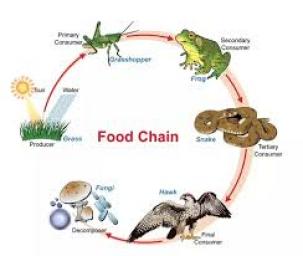Breaking the Food Chain
A food chain is a link between plants and animals. It starts with a plant. The next part of the link is a plant eater. When the prairie plants were uprooted, the animals that depended on them lost their food source. So while the farmers produced more food for people, they broke the animals’ food chain. For example, if a bird needs seeds to eat and the plant is gone, that bird will not be able to survive. And the animals that ate that bird won’t have any food, either.
A food chain is part of a bigger system called a food web. That web links the living things in an environment. The herbivores in that system depend on the plants. If the plants are removed, the herbivores cannot survive. Herbivores in Chicago include rabbits, squirrels, and many insects. Long ago, they used to include bison and deer. Today you will find some deer in some parts of this area, but you won’t find them in the city.
When herbivores lose their food, they die out. Then the carnivores, the animals that eat other animals, lose their food, too. Wolves used to depend on the deer for their food. Without deer, the wolves lost their food. Foxes died out, too. They had hunted birds, even catching ducks when they were on the side of ponds.
Remove just one kind of plant from an environment and you disrupt a food chain. Plow up the land and you destroy the whole system.
What happened in Chicago? People moved in. They built homes. They built streets. They took away land from nature. Look at this timeline and you’ll see how more and more people moved here. We don’t have the numbers for the bison or deer. But we know that today there are no bison in Chicago, you will only find them at the zoo.
1880 The population of the city is 503,185; farms continue to expand
1890 The population of the city is 1,099,850
1900 The population is 1,698,676
1910 Factories expand in the city; population is 2,185,283
1920 The city’s population has grown to 2,701,705
1930 The city’s population is 3,376,438
